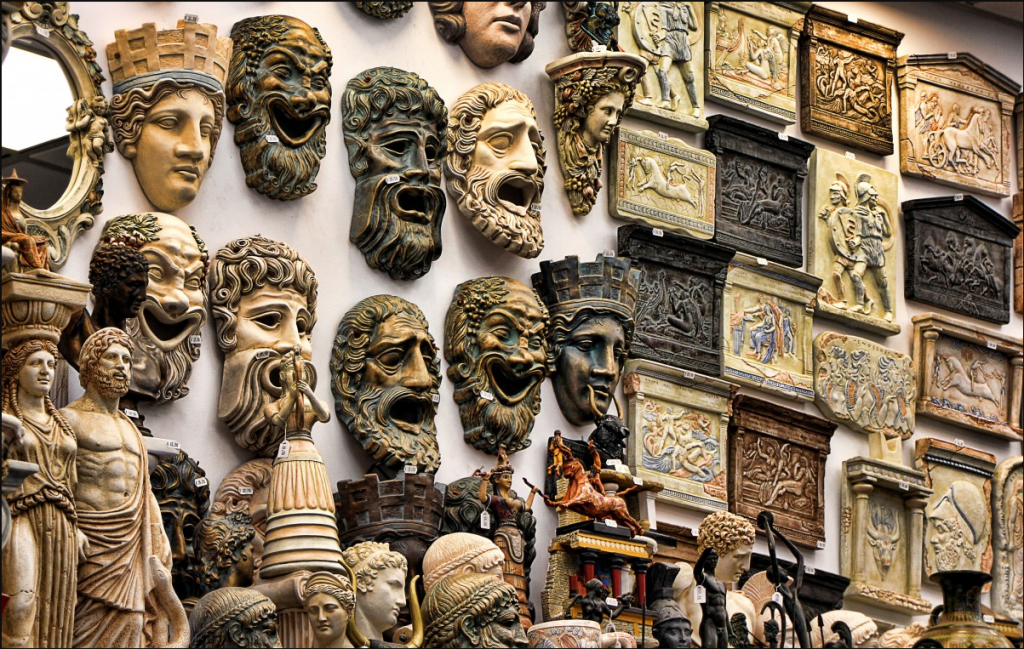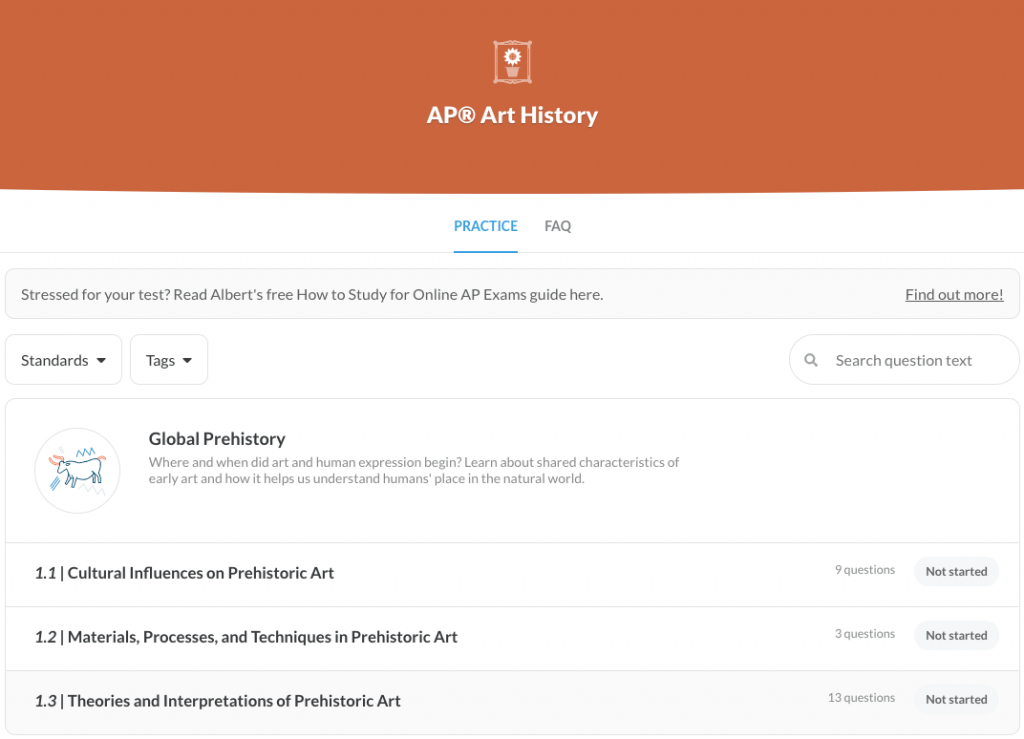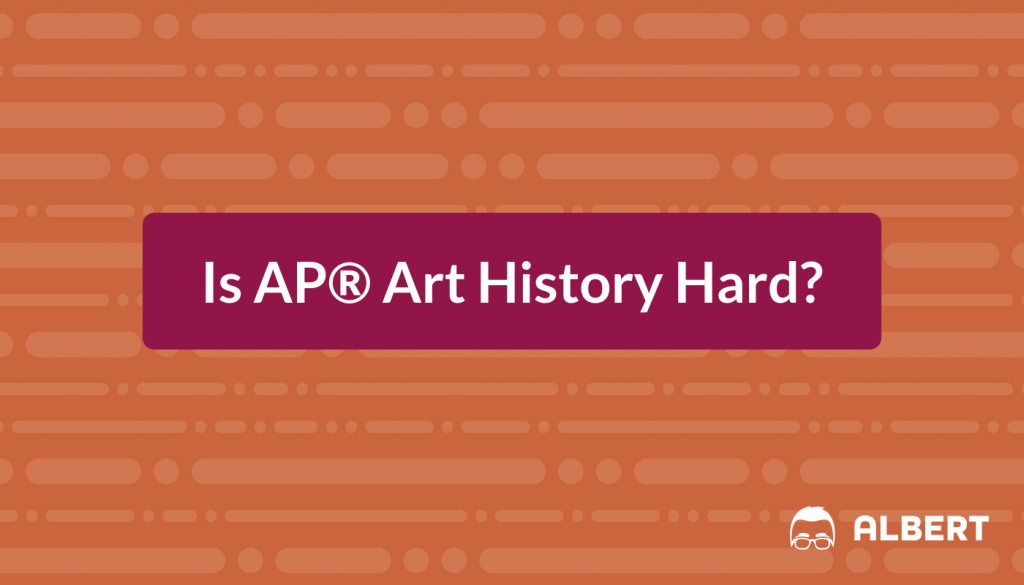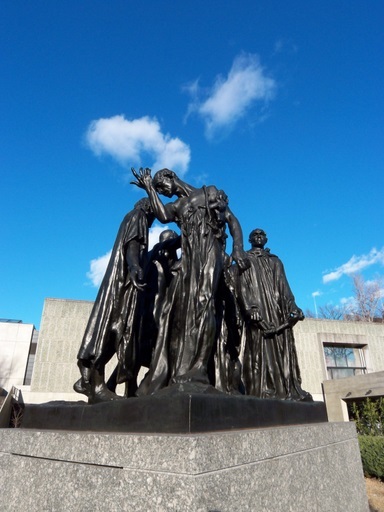Do you enjoy art? Do you like history? Does the idea of tracing a subject’s background and roots sound appealing? If you answered yes to these questions, you should consider taking AP® Art History! AP® Art History is an AP® class whose focus is to introduce you to the different forms of art that have developed since humans first started making art. The course is dedicated to presenting art in a holistic, global fashion. This means that you will trace the history of various art forms in different cultures and how they changed and evolved as time passed.
Additionally, you will learn about art from different cultures and how artists from different groups experience and create art. You will learn about the various mediums artists have used throughout the centuries and how that affected the kind of art that developed. From a broad range of works and pieces, you will learn about artists as well, and through critical analysis, you will eventually discover the network of art that exists on the global scale.
If this has caught your eye, you’ll also be happy to learn that AP® Art History has the bonus of transferring to your future college as potential college credit. If you put in the hard work and preparation and score well enough on the exam in the spring, you may have the opportunity to skip a general education requirement at your school and progress to a higher-level class of your choice. If you are still on the fence, however, why don’t you keep reading and learn more?
In the following article, we are going to give you a breakdown of the AP® Art History exam. We will also give you a brief summary of the content you will be exposed to and the actual structure of the exam. Finally, we’ll discuss the skills you are going to need to succeed, provide an analysis of AP® Art History’s value, and then help you figure out your next move.
By the Numbers
According to a report done by CollegeBoard in 2016, 25,523 students took AP® Art History. In 2015, only 23,314 students took AP® Art History. This means there was almost a ten percent increase in students who decided to take the class as well as the exam at the end of the year. Additionally, in 2016 there were 2,054 high schools offering AP® Art History as a possible course.
If you are wondering if colleges accept AP® credit for AP® Art History, then you are in luck. About 1,239 colleges received AP® Art History as a replacement credit for another class. You will just want to get in contact with any of the colleges you plan to attend to make sure they accept AP® Art History as a transferable college credit. Sometimes a particular college will only accept the transfer credit if it is above a certain score. If you look at the list below, you will see the score breakdown for the most recent AP® Art History Exam.
- Students who scored a 5 – 2,807
- Students who scored a 4 – 5,762
- Students who scored a 3 – 7,099
- Students who scored a 2 – 7,017
- Students who scored a 1 – 2,838
Of the 25,523 students who took the exam, only 15,668 scored a 3 or higher, about 61.4%. While receiving a three on the exam means you passed, you want a 5 for the best score, and only about 11% of the students who took the AP® Art History exam scored a 5. Now that we have given you a statistical breakdown, we are going to delve into the content to see if this is a subject you would be further interested in pursuing.

Content
As a student of AP® Art History, you will see 250 works of art. These works of art will correspond with both a specific region of the world as well as a particular period. You will discuss the styles of the work, the techniques that went into their creation, and the societal context during which the work was created. The time periods and the number of pieces are as follows:
- Global Prehistory, 30,000-500 BCE – 11 works
- Ancient Mediterranean, 3500 BCE-300 CE – 36 works
- Early Europe and Colonial Americas, 200-1750 CE – 51 works
- Later Europe and Americas, 1750-1980 CE – 54 works
- Indigenous Americas, 1000 BCE – 1980 CE – 14 works
- Africa, 1100-1980 CE – 14 works
- West and Central Asia, 500 BCE-1980 CE – 11 works
- South, East, and Southeast Asia, 300 BCE-1980 CE – 21 works
- The Pacific, 700-1980 CE – 11 works
- Global Contemporary, 1980 CE-Present – 27 works
As you can see from the list, the span of human artwork is covered. You will be introduced to artists and their pieces from all around the world. While these will provide the framework and subject of study, the concepts, you will study can be reduced down to three major ideas.
First, you will study the concept that artists manipulate material and the world around them to create something aesthetically pleasing. This means you will discuss the ideas of form, function, content, and context.
Second, you will talk about the influence of tradition on art and how it changes as a result. You will draw comparisons between pieces of art within the same group and how a single tradition created differences in each work.
Finally, you will discuss the idea of interpretation and how it can vary widely based on the audience or even from person to person. Now that you have an idea of what exactly you will be studying in the course let’s talk about the exam’s structure.
Exam Structure
As with any AP® subject, AP® Art History has its own exam that you will take in the spring. Its format is similar to other AP® exams because it is divided into two parts. The first section is dedicated to multiple-choice questions. In the first section, you will have an hour to answer 80 questions. Of the 80 questions in this section, it is further divided into two parts. There will be eight sets of questions based on color images. In each individual set, there will be between three to six questions each. The rest of the section will be dedicated to regular multiple-choice questions. The multiple-choice section represents 50% of your score.
The second section is composed of Free Response Questions (FRQ). In the free response section, there will be two 30-minute essay questions as well as four 15-minute essay questions for a total of six questions. Each question will typically be accompanied by pictures of the art you have studied during the course of the year. In total, you will have two hours for the free response section, and it represents the other 50% of your score.
Skills Required
In this section, we will outline the skills you will need to succeed in AP® Art History. One of the major skills you are going to need is a strong logical, analytical ability to make comparisons between artwork. Comparisons can be drawn between time periods, cultures, or even the arts’ medium. You want to be able to compare and contrast the works’ form, function, content, and context. An example of this would be pulling two different works from the same time period from two different artists and analyzing the relationship between the works, what ideas are present, and what feelings the artists are trying to evoke.
Another important skill to have is the ability to draw relationships between artwork and the historical context. Nothing exists in a vacuum, especially art, and you want to be able to describe how a time period affected the art created during that span of time. Additionally, you need to be able to identify historical trends that are visible in art throughout that time period. What was happening in the world when the art was being created and how was the art affected as a result?
Since it is also a history class, you need to be able to trace art through the ages and explain how one period affected another and developed into a tradition. You will also need to be able to explain how a tradition changes and evolves in regard to specific pieces of artwork. Sometimes there are specific works of art created that are considered pivotal to a particular tradition. You need to identify the artwork and explain what about that work was so influential.
Finally, you will need to be able to explain how art is interpreted and the various factors that play into how we think about art. You need to be able to quickly identify a work’s title, the artist who created it, its cultural origin, and the materials used to create it. You also need to be able to clarify the message the artist was trying to send to his audience and how the audience received it. Then, when we discuss art, you will need to be able to explain the type of language we use and how it differs between artistic traditions. Now that we have discussed the skills needed for the AP® Art History exam, let’s talk about whether AP® Art History is worth it as a course.
Is AP® Art History Worth it?
Whether AP® Art History is worth it or not depends on a couple of factors. When considering AP® Art History, you want to think about what other classes are going to be on your schedule. AP® Art History covers the breadth of human history in terms of art produced in prehistory up to the present. Not only will you need to know the artwork but who produced it and what culture it belongs to. It is a massive amount of information to say the least. Can you handle the amount of memorization you are going to need to get the score you want on the AP® Art History exam?
Art can sometimes be subjective, but that does not mean it is a completely enigmatic topic. The way you think about the subject can heavily depend on how you are learning it. It is important that you have an instructor you can trust to help break down the artwork. Is his teaching style clear to you? Is he able to explain concepts properly? Most importantly, will your instructor be able to teach you how to put together a plausible argument about the artwork and how to defend your opinion? Your teacher will play a big role in how you analyze material, and it can spell success or failure for you when the exam rolls around.
Finally, do you have access to AP® Art History reference materials? This means AP® Art History study guides, sample AP® Art History multiple-choice questions, and former AP® Art History FRQs. These will all help you prepare for the final exam and give you an idea of the kind of material you should expect. Most importantly, do you have access to images of the artwork that will be on the exam? While you may have very vivid descriptions, it is crucial that you see and visualize the art for yourself since you cannot identify artwork based on its description alone.
If you have access to all these tools and still feel motivated to take the class, go ahead to the next section! We will help you outline your next steps and how to prepare a proper AP® Art History study guide.
Next Steps
It is never too early to start studying! First, you will want to familiarize yourself with the different sections of the exam. Look at the timeline of art and start trying to match artwork with their specific period. Set a big goal with smaller goals to hit on a weekly basis and bigger targets each month. You want to be able to identify the artwork and its associated information. Staying organized is key due to the sheer volume of information. You will want to test yourself regularly to get an overall understanding of what works you need to focus on.
When you are reviewing information and preparing for the exam, you want to take a look at previous question or samples from AP® Art History study guides. This will give you a look at how the questions are phrased, what information they are looking for, and give you perspective about where you are in your studies. In this AP® Art History study plan, we have provided an AP® Art History multiple-choice question and AP® Art History FRQ. However, the more questions you see, the better off you will be!
Sample AP® Art History Multiple-Choice Question
Although the cave paintings in the Great Hall of the Bulls at Lascaux were originally interpreted as depictions of hunting scenes, they have more recently been interpreted as paintings intended to:
A. warn people about dangerous animals threatening villages
B. portray scenes of animal domestication
C. document a series of animal-based rituals
D. tell a mythic narrative of human origins
The correct answer is C. Option C is the correct answer because of the way context affects interpretation of art. Previously, when the cave paintings were first discovered, it was interpreted as a depiction of hunting in human prehistory since it was based on information we had at the time. Yet, as time went on and further information was teased from the art, the interpretation changed as well.
Sample AP® Art History FRQ
Many works of art are intended to convey an interpretation of a culture’s history.
- Select and completely identify one work of art that conveys an interpretation of a culture’s history.
- Identify the intended audience of the work.
- Describe the historical content that the work is intended to convey.
- Then, using specific visual and contextual evidence, analyze how the work conveys that historical content.
You may choose from the following works:
- Alexander Mosaic from the House of Faun, Pompeii
- The Burghers of Calais
- Lukasa (memory board)
A correct answer would be:
The Burghers of Calais was a bronze sculpture commissioned by the French port of Calais. The artist Calais commissioned was Auguste Rodin, who began work in 1884 and completed the sculpture in 1889. The audience of the work was meant to be the French population, specifically Calais, to remind them of a time in French history where individuals were called for the ultimate self-sacrifice in the face of defeat. The content is that of Eustache de Saint Pierre and five other burghers who sacrificed themselves in order to save Calais from destruction at the hands of Edward III.
We have laid out the facts for you, but you are still going to have to decide for yourself how best to prepare. Are you going to take AP® Art History?
Need help preparing for your AP® Art History exam?

Albert has hundreds of AP® Art History practice questions, free response, and full-length practice tests to try out.









